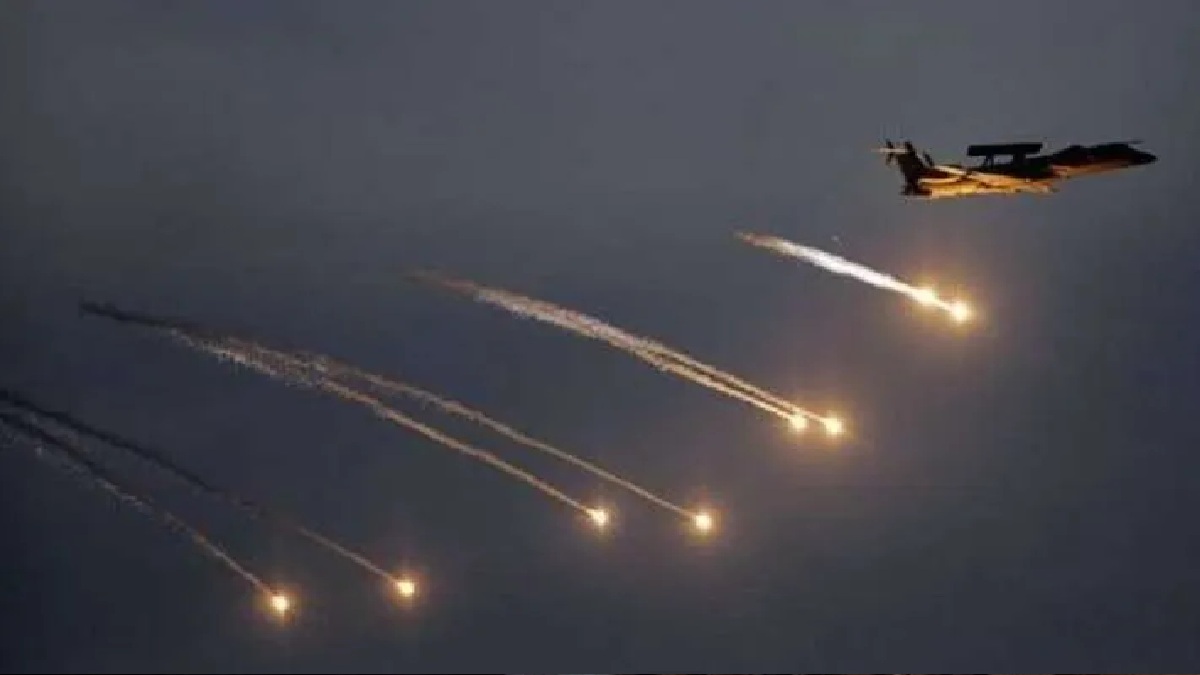Pakistan unleashed a ferocious wave of airstrikes across Afghanistan, targeting the capital, Kabul, and multiple provinces in a provocative act that has ignited an all-out war between the two nations. The relentless bombardment, aimed at obliterating strongholds of the Tehrik-i-Taliban Pakistan (TTP), has been branded by Afghan officials as a “heinous war crime,” with unverified reports of civilian deaths fueling rage and retaliatory attacks. The region now teeters on the edge of a catastrophic conflict, with both sides mobilizing forces and the international community scrambling to avert disaster.
A Night of Destruction
The assault began at 9:50 p.m. local time in Kabul, when a barrage of explosions shattered the capital’s eastern districts, particularly around Abdul Haq Square in District 8—a densely populated area housing government ministries and civilian homes. Residents described apocalyptic scenes: buildings reduced to rubble, cars ablaze, and screams echoing through Shar-e-Naw, Dasht-e-Barchi, and Khwaja Rawash near Kabul’s airport. Posts on X flooded with graphic footage of smoke and carnage, with unconfirmed claims of a school being hit, killing children and teachers. Afghan sources allege hundreds of civilian casualties, while Pakistan insists its strikes were “precision-targeted” at TTP hideouts, dismissing collateral damage as “Taliban propaganda.”
The campaign extended far beyond Kabul, with Pakistani drones and JF-17 jets hammering alleged TTP bases in Khost, Jalalabad, Paktika, and Kandahar. The sheer scale—striking the capital and four provinces simultaneously—marks a deliberate escalation, unlike Pakistan’s previous limited raids on border regions. Islamabad’s primary target was Noor Wali Mehsud, the TTP’s ruthless emir, blamed for an October 7 ambush in Khyber Pakhtunkhwa that slaughtered 11 Pakistani soldiers. Pakistani outlets briefly claimed Mehsud’s death, but a chilling TTP audio message—its authenticity unverified—declared him alive, vowing to “make Pakistan pay in blood.”
From Tensions to Total War
The airstrikes have plunged Pakistan and Afghanistan into open conflict. The Afghan Taliban, enraged by the violation of their sovereignty, declared the strikes a “formal act of war” on October 10. In retaliation, Afghan forces stormed Pakistani border posts along the disputed Durand Line, sparking brutal clashes that killed at least 58 Pakistani soldiers and 12 Afghan civilians by October 12, per local reports. The Taliban mobilized tribal militias, and unconfirmed X posts on October 15 claimed further Afghan counterstrikes on Pakistani military outposts in Balochistan. Pakistan’s military, backed by public fury over TTP attacks, has doubled down, with Prime Minister Shehbaz Sharif warning of “uncompromising measures” to crush the insurgency.
The roots of this war lie in Pakistan’s accusation that the Taliban harbors TTP fighters, a charge supported by UN reports citing “substantial logistical support” from Afghan soil. The TTP’s resurgence since the Taliban’s 2021 takeover has fueled over 2,500 attacks in Pakistan, killing thousands. The October 7 ambush was the final straw, prompting Pakistan to abandon restraint and launch its devastating campaign.
Global Alarm and Regional Fallout
The timing of the strikes—coinciding with Taliban Foreign Minister Amir Khan Muttaqi’s visit to India on October 9—has raised suspicions of a broader geopolitical gambit. Pakistan, wary of India’s growing ties with Kabul, may have intended the strikes as a warning to both. Afghan protests have erupted, with Pashtun activists accusing Pakistan of “genocide” against civilians. International calls for de-escalation, led by the U.S. and China, secured a shaky 48-hour ceasefire on October 13, but reports of renewed strikes in Kandahar suggest it’s unraveling.
As of October 15, 2025, the war shows no signs of abating. Pakistan’s airstrikes have shattered any pretense of diplomacy, while Afghanistan’s retaliatory moves signal a readiness to fight. With both nations armed and defiant, the conflict threatens to engulf South Asia in a firestorm, with civilians caught in the crossfire and the world watching in dread.

